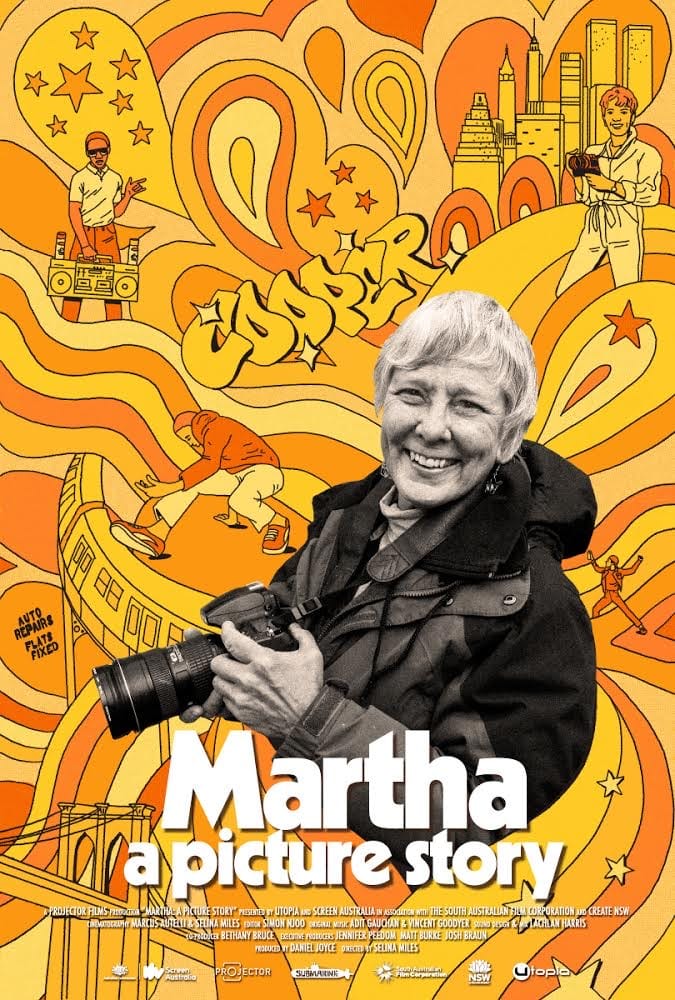In Selina Miles?s debut feature documentary, Martha: A Picture Story, we enter the world of street art through Martha Cooper, who has been documenting that field for more than forty years.
Cooper was in many ways a trailblazer as a working woman photojournalist. Her early years in the business are covered only briefly. But when she gets to New York and begins working for the Post, she begins to grow in her own understanding of capturing life in the city. It is when she began taking pictures of kids at play in some of the more depressed neighborhoods, that she started seeing graffiti writers, most of whom were writing their names. At the time, the city?s subway cars were a prime target for such writing. Cooper established enough rapport with these writers that she had access to them as they worked. Even today, at age 75, she is held in great regard by the street art community worldwide, and continues to accompany masked artists as they make their clandestine works.

Besides street art, she has spent time capturing the hip hop dance scene and just the lives of people who are finding joy as they get by as best they can. It is really the people, more than the art that are her real focus. When she collaborated on the book Subway Art (now considered the ?bible? of street artists), her co-author Henry Chalfant was more interested in the art itself, but Cooper cared about the artists and their process. That focus seems to be central to her own artistic process of finding the human stories in the art. That also carries over into the way Miles has put this film together. We see the art, but the main point is to get to know Cooper.
A key question that arises in the film is what constitutes art? Is street art or subway art really art, or is it vandalism? Is it free expression or criminal behavior? In the same way, what of Cooper?s photography. Is it art? Is it documentation? As we watch her with a gallery curator going through her pictures, they discuss the merits of pictures with people smiling. Does such posing negate the artistic nature of her work?
While the assumption of the film is that this is art, neither Cooper nor the film provides an apologia for the artistic genre. There is no psychologizing about what leads people to doing this. There are no discussions of themes or rebellion. The art is presented as it is for us to consider.
Martha: A Picture Story is available on VOD.




